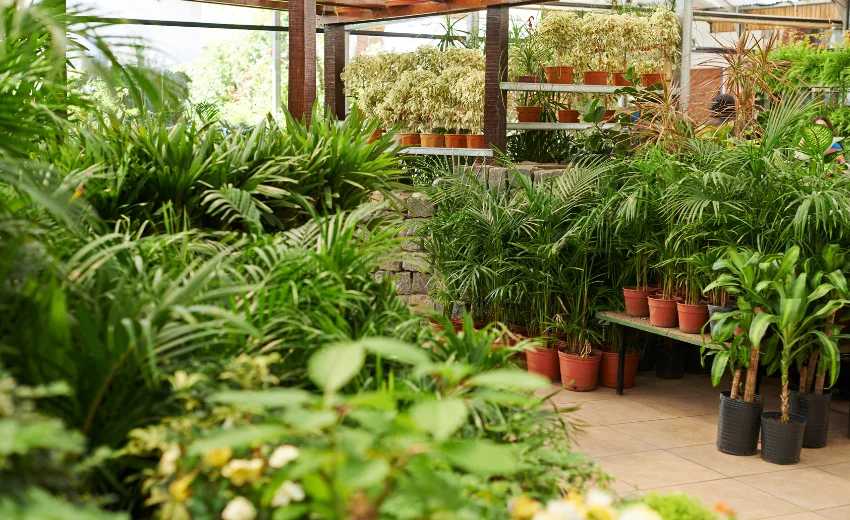If you love plants and dream of being your boss, starting a plant business might be the perfect opportunity. This rewarding venture combines passion with profit, letting you build a meaningful and fulfilling business. While you don’t need formal training, succeeding in this field requires knowledge about plants, soils, marketing, and operations.
In this guide, we’ll cover everything you need to know to start your plant business from the ground up.
Why Start a Plant Business?
Benefits
- Independence: Running your own plant business means being in control of your decisions and your success.
- Low Startup Costs: Unlike other companies, starting a plant business requires less initial investment. Your most significant costs are transportation and supplies.
- Reliable Income: Securing clients such as office complexes, malls, or restaurants can provide a steady income stream.
Challenges
- Luxury Service: Plant care is often considered non-essential, so that it might be one of the first expenses cut during economic downturns.
- Pest Issues: Insects can harm your plants, affecting your stock and reputation. It is crucial to manage infestations effectively.
Steps to Start Your Plant Business
- Create a Business Plan
A clear plan will guide your business decisions and help you stay focused.
- Research the Market: Study competitors and identify market gaps. Find out what types of plants and services are most popular locally.
- Budgeting: Allocate funds for essentials like tools, seeds, transportation, permits, and marketing. Consider using affordable tools like bookkeeping apps and customer management systems to save costs.
- Set Goals: Outline your short-term and long-term objectives, such as revenue targets or client acquisition strategies.
- Improve Your Plant Care Skills
While formal training isn’t required, investing in your knowledge will pay off.
- Read Books and Articles: Learn about plant cultivation, care techniques, and joint problems.
- Visit Nurseries: Observe how established nurseries operate and gain insights from their setups.
- Join Seminars or Classes: Many community centers and online platforms offer workshops on plant care and business operations.
- Start Marketing Your Business
Spreading the word is critical to attracting customers.
- Create Business Cards and Flyers: Distribute them locally to build awareness.
- Build a Website: Showcase your plants and services online with beautiful images and detailed descriptions.
- Use Social Media: Platforms like Instagram and Facebook are excellent for engaging potential customers and promoting your offerings.
Choosing Your Business Type
Plant businesses can take various forms. Choose one based on your time, resources, and goals.
Backyard Nursery
- It is ideal for beginners or those with limited space.
- Focus on growing and selling a small variety of plants directly from your home.
Retail Nursery
- Aimed at homeowners and small-scale buyers.
- Typically, it involves renting a storefront to display and sell plants.
Wholesale Nursery
- Supplies large plants to businesses like landscapers, municipalities, and retail stores.
- It requires more space and resources but offers higher revenue potential.
Getting Started: A Step-by-Step Approach
- Backyard Nursery Setup
- Gather Tools: Ensure you have essential gardening equipment like trowels, watering cans, and a wheelbarrow.
- Choose a Few Plants: Start with 1–2 types of plants that are easy to grow and popular in your area.
- Advertise Locally: Use flyers, local Facebook groups, and marketplaces to promote your plants.
- Retail Nursery Setup
- Find a Space: Look for well-lit, ventilated rental spaces without carpets (to avoid mold from watering).
- Stock Up: Order seeds, pots, and gardening supplies to meet your customers’ needs.
- Hire Help: If your business grows, consider hiring employees to assist with operations.
- Wholesale Nursery Setup
- Connect with Businesses: Contact local shops, landscapers, and architects to establish partnerships.
- Draft Contracts: Protect your business with written agreements that outline pricing, duties, and delivery terms.
- Plan Nursery Cycles: Grow plants in batches to ensure consistent availability for your clients.
Expanding into Landscaping Services
If you have a knack for design, consider offering landscaping or interior plant design services.
- What You’ll Do: Create beautiful plant arrangements for homes, offices, or events.
- Target Clients: Focus on businesses like restaurants, hotels, and offices that often require long-term plant maintenance.
- Equipment Needed: Basic gardening tools, watering systems, and transportation to deliver and maintain plants.
Profitable Plants to Grow
Certain plants are highly sought after and can offer excellent returns:
- Japanese Maples: Known for their vibrant colors, they can sell for anywhere from $25 to $1,000 depending on size and variety.
- Bonsai Trees: Popular for their beauty and uniqueness, they can fetch high prices, especially mature specimens.
- Succulents: Easy to grow and trendy, these plants are a hit with homeowners and offices alike.
- Heritage Fruit Trees: Dwarf varieties are especially in demand for quick yields and aesthetic appeal.
Tips for Success
- Set Competitive Prices: Research local market rates to set prices that attract customers while ensuring profitability.
- Engage with Customers: Talk to your clients to understand their preferences and gather feedback for future improvements.
- Stay Organized: Use project management tools to track sales, inventory, and customer interactions.
- Adapt to Trends: Pay attention to what’s popular and adjust your stock or services accordingly.
Conclusion
Starting a plant business from scratch is an exciting journey combining passion and entrepreneurship. With careful planning, continuous learning, and a strong focus on customer satisfaction, you can create a thriving business that grows alongside your plants. Whether running a small backyard nursery or supplying large-scale clients, the possibilities are endless.

